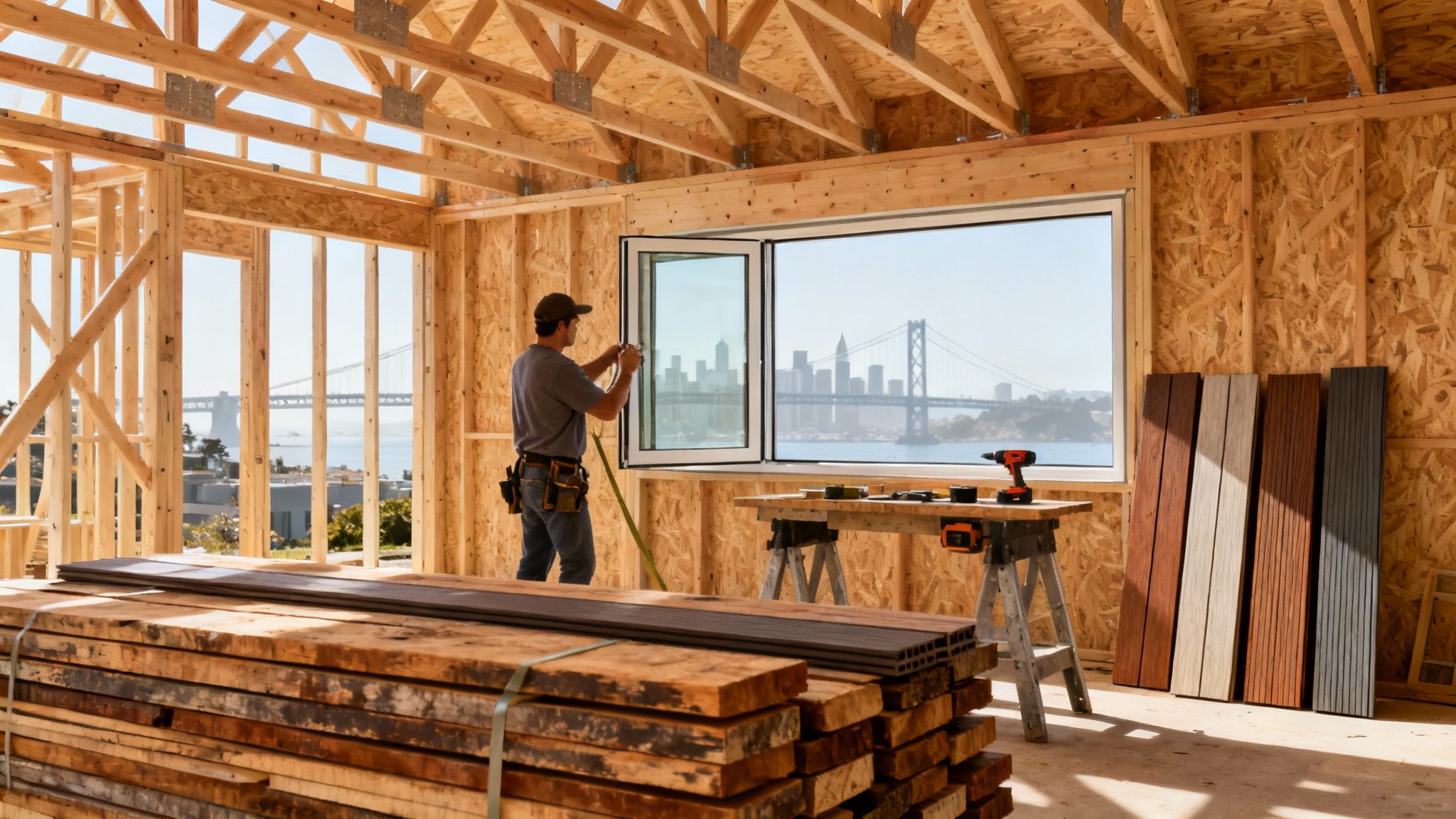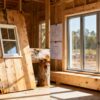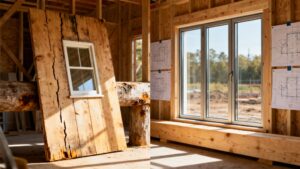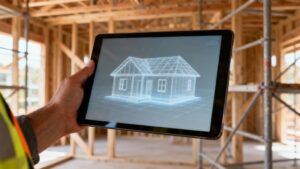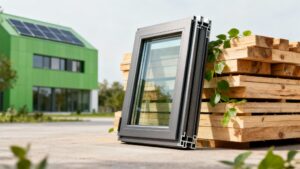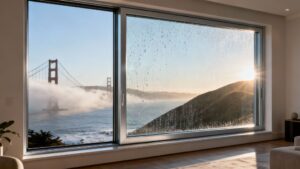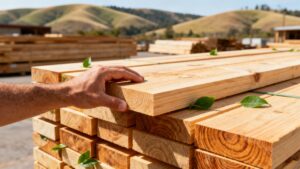In the Bay Area, one thing is now clear in every project plan: sustainable building is the new standard. This isn't a passing trend. It's a major shift driven by smart homeowners, strict California codes, and a demand for real value.
This guide explains how choosing better materials from the start improves a building's strength, comfort, and efficiency for years to come.
The New Foundation for Bay Area Projects
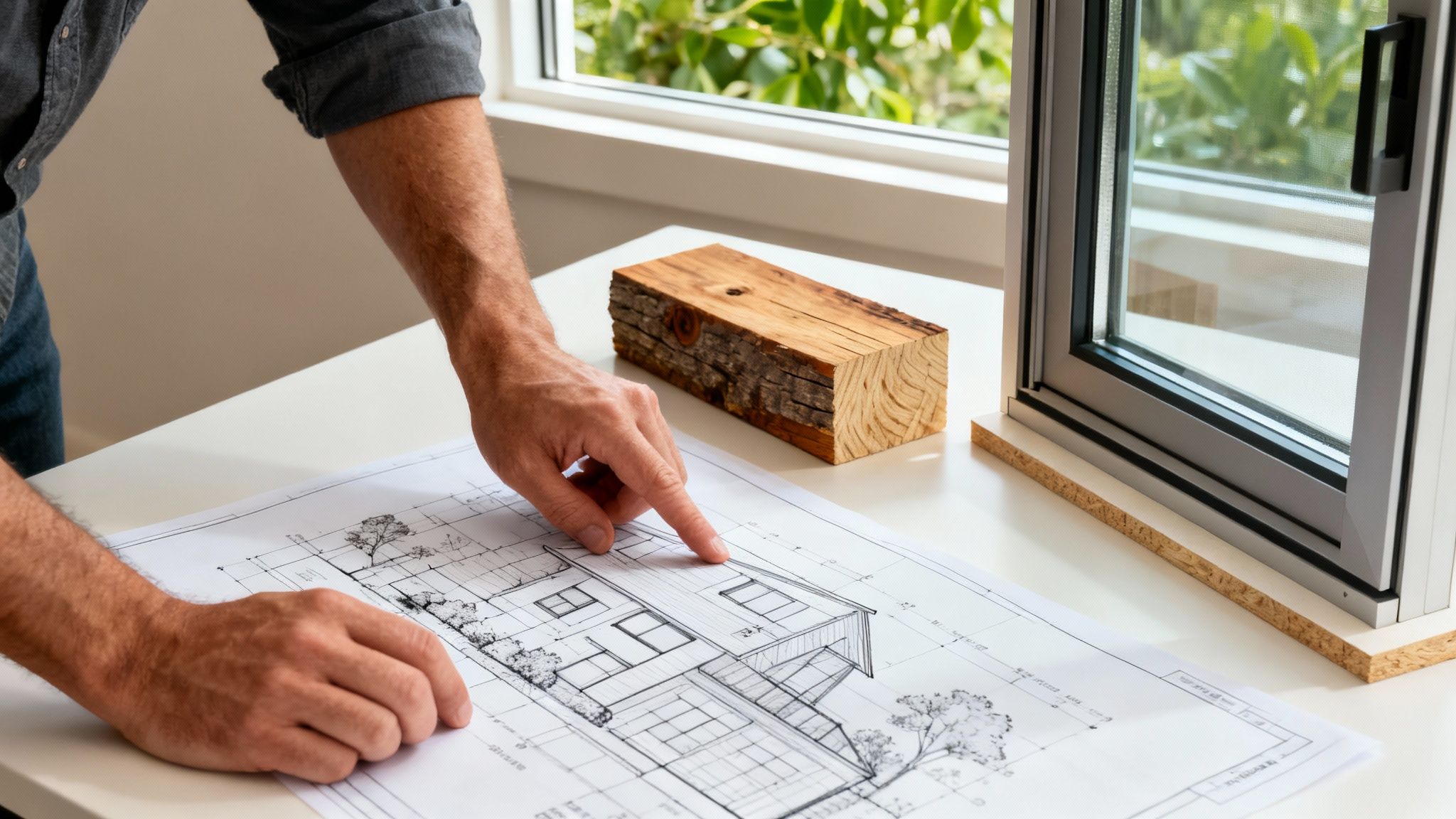
After a few years of price swings and supply chain issues, the construction market in Berkeley, Oakland, and across the Bay has stabilized. This new confidence allows builders and homeowners to invest in high-quality, eco-friendly materials that perform well and last long.
The focus has moved from just building to building smarter. This change toward sustainable materials is reshaping local construction. It's a practical response to client demands and a necessary step to meet California's tough building codes.
Why Green Building Has Become the Standard
What is driving this change in Bay Area construction? A few key factors explain why high-performance materials are now expected by both regulators and clients.
- Tough State Codes: You can't build in California without meeting codes like Title 24. These rules require high energy efficiency, making top-performing materials a must-have.
- Smarter Homeowners: Today's homeowners want lower utility bills, better indoor air quality, and higher resale value. Sustainable materials deliver on all these points.
- A Stable Market: With material prices more predictable, it's easier for builders to invest in quality, durable products. This makes sustainable choices more attractive.
This shift toward eco-friendly practices is a response to our region's environmental challenges. Having a comprehensive guide to energy efficiency for buildings is now essential for any modern project.
Why Remodelers and Builders Prioritize Green Materials
What’s really behind the green building movement in the Bay Area? It’s a mix of practical needs and homeowner demands. The move toward building smarter is a direct response to the market in places like Berkeley and San Francisco.
With higher mortgage rates, many homeowners are choosing to remodel instead of move. This has created strong demand for materials that offer lasting benefits and good design.
Homeowners Want Lasting Value
Today's clients are well-informed and expect more than just a new look. They want upgrades that improve their daily lives and make their homes more comfortable and efficient.
Homeowners are asking for materials that provide:
- Lower Utility Bills: Energy-efficient windows and doors save money on heating and cooling.
- Better Indoor Air Quality: Materials with low volatile organic compounds (low-VOCs) create a healthier living space.
- Increased Property Value: Upgrades made with durable, high-performance materials are a smart investment.
This focus on quality of life and financial return makes sustainable choices an easy sell. You can learn more about the core ideas in our guide on what sustainable building is.
The Professional's Competitive Edge
For builders, contractors, and architects, using green design is now critical for staying competitive. Understanding sustainable materials is essential for meeting California’s strict building codes, especially Title 24.
Sustainability has moved from a buzzword to a core business strategy. Meeting—and exceeding—California's energy codes with high-performance materials is now a standard expectation.
Architects and builders who deliver sustainable designs meet client demand and keep projects compliant. This expertise builds a strong reputation in the Bay Area's construction market.
Exploring Essential Sustainable Building Materials
Let's look at the actual materials that are changing projects across the Bay Area. These are the tools for building smarter, balancing performance with a smaller environmental footprint.
Whether it’s a Berkeley craftsman or a modern Oakland home, the right materials make all the difference. These options meet California's tough codes and fit the Bay Area's unique style.
As you can see, client demand, professional knowledge, and smart regulations all work together to improve building standards.
FSC-Certified and Reclaimed Lumber
When your project needs the natural warmth of wood, you have two great sustainable options.
First, FSC-Certified lumber guarantees that the wood comes from responsibly managed forests. It's a simple way to ensure your project supports a healthy environment.
Second, reclaimed lumber offers sustainability with a story. Salvaged from old buildings, this wood has a unique character you can't replicate. It’s perfect for accent walls, flooring, or custom furniture. For more on sourcing, see our guide to being an eco-friendly lumber supplier in the East Bay.
Engineered Wood for Modern Performance
Engineered wood products are often an upgrade over solid timber. Materials like Cross-Laminated Timber (CLT) offer predictable strength and are made from smaller, faster-growing trees. This makes more efficient use of our forest resources.
Engineered wood products are a prime example of building smarter. They store carbon, reduce construction waste, and can speed up building timelines.
These materials are great for creating the open floor plans that clients love. They are becoming a top choice in the Bay Area for their performance and lower carbon footprint.
High-Performance Windows and Doors
In the Bay Area's mild climate, windows and doors are key to energy efficiency. High-performance units from brands like Marvin are essential for comfort and meeting building codes. They are designed to prevent heat transfer, keeping homes cool in summer and warm in winter.
Here’s what to look for:
- Low-E (low-emissivity) coatings: These invisible layers reflect heat, keeping it outside in the summer and inside in the winter.
- Multiple panes: Double or triple-pane windows create a powerful insulating barrier.
- Durable frames: Modern fiberglass and high-quality composite frames provide excellent insulation and are built to last.
These features help you meet California’s Title 24 energy standards. Smart building can also include generating energy, and understanding how to go about integrating solar panels into new construction is a valuable skill.
Navigating California's Complex Building Codes
If you build in the Bay Area, you work with a detailed set of rules. Regulations like CALGreen and Title 24 are California's plan for a more energy-efficient future. Understanding them is key to a successful project.
Meeting these codes is simpler than you might think. Choosing the right materials from the start makes compliance a straightforward process, not a headache.
From Code Compliance to Green Certification
Meeting code is just the beginning. Many builders and homeowners in the San Francisco area aim for certifications like LEED (Leadership in Energy and Environmental Design).
High-performance windows that meet Title 24 also earn points toward LEED certification. This is where building smarter becomes a real strategy. Our guide explains what LEED certification is and why it matters.
California's sustainability goals are pushing our industry forward. You can learn more about these trends in the Bay Area sustainability blueprint.
Your Practical Guide to Compliant Decisions
You don't have to figure out these codes alone. A knowledgeable local supplier like Truitt & White can make a big difference. Our team can guide you to materials that meet both your design goals and California's energy standards.
Choosing the right materials from the beginning is the most efficient path to compliance. It saves time, prevents costly rework, and ensures the final build is as high-performing as it is beautiful.
This proactive approach turns a challenge into an opportunity. By selecting compliant, sustainable materials, you create buildings that are legal, comfortable, and valuable for years to come.
Sustainable Building in Action Across the Bay Area
It's one thing to talk about sustainable materials; it’s another to see them in action. Across the Bay Area, these ideas are creating high-performing buildings that look great and feel even better to live in.
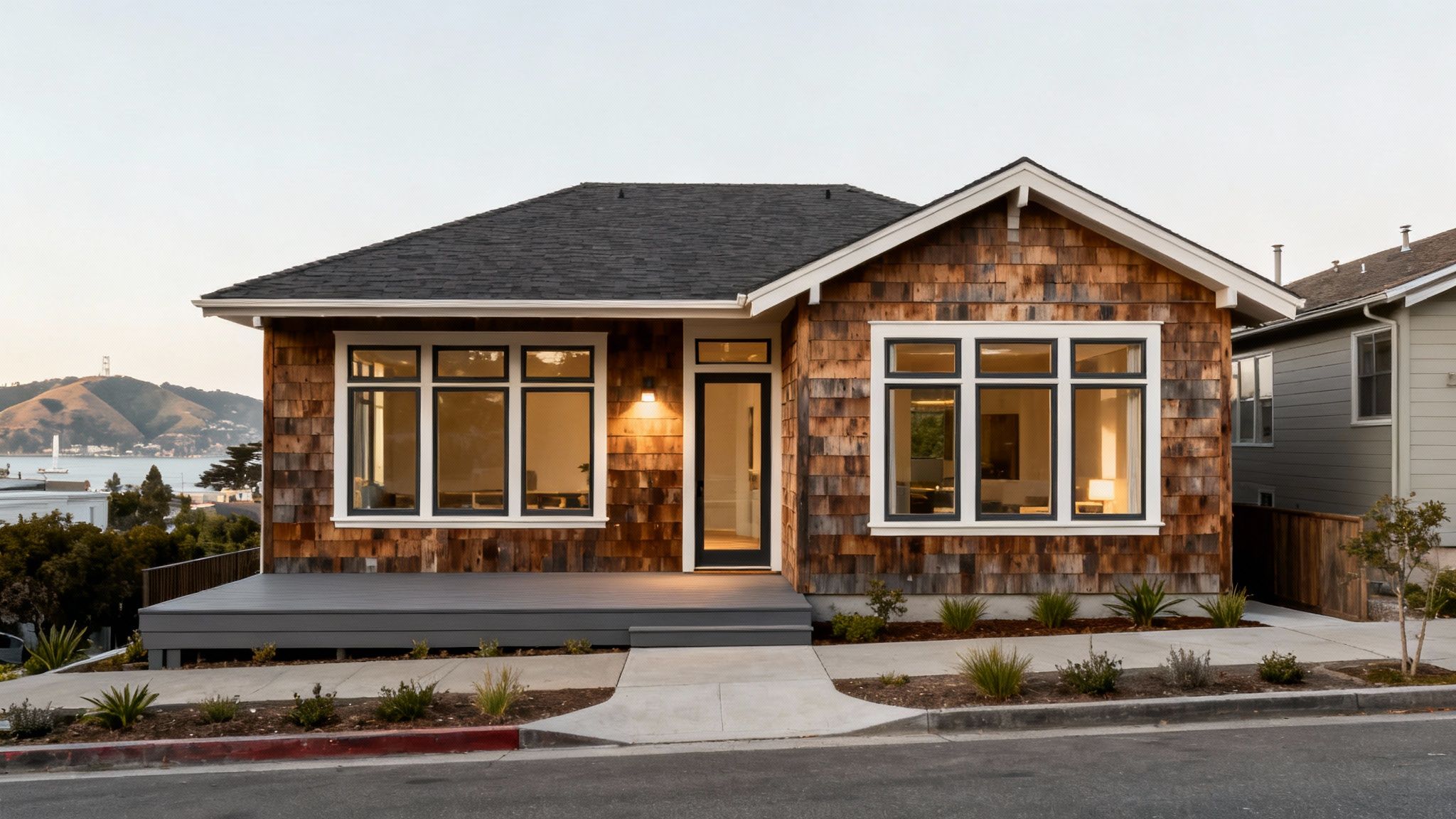
These projects show how combining sustainable materials creates a better home. It’s the perfect blend of smart design, tough local codes, and the unique style of our region.
Case Study: A Berkeley Craftsman Remodel
Imagine a classic Berkeley Craftsman getting a modern update. The goal is to enhance its history for the next 100 years. A builder might use reclaimed lumber for interior walls, preserving the home's character while recycling material.
At the same time, they replace old, drafty windows with high-performance units from Marvin. These windows are engineered to exceed California’s Title 24 energy codes. The result is a home that honors its past while delivering modern comfort and efficiency.
Case Study: An Oakland New Construction Project
Now, consider a new home being built in Oakland. The architect might use Cross-Laminated Timber (CLT) for the main structure. This engineered wood product is strong and has a much lower carbon footprint than concrete or steel.
The design is finished with composite decking for a backyard patio. This material is made from recycled plastic and wood fibers, offering great durability with low maintenance. This project is also a great example of reducing construction waste on Bay Area job sites.
Smart, sustainable design is all about creating a system where every component works together. The framing supports the structure, the windows manage the climate, and the finishes provide lasting beauty.
This integrated approach is the new standard. In San Francisco, projects seeking LEED certification have jumped by 30% since 2020. You can explore the full Bay Area sustainability blueprint to see how these priorities are shaping our region.
Your Partner in Bay Area Sustainable Construction
In the Bay Area, building smarter is the new standard. Sustainable materials are at the heart of this shift, leading to homes that are more efficient, comfortable, and valuable.
For decades, Truitt & White has helped contractors, architects, and homeowners make smart choices. Our deep product knowledge helps you meet California's strict codes and your own sustainability goals.
- Get access to FSC certified lumber and beautiful reclaimed wood.
- Choose from high-performance windows and doors that comply with Title 24 and lower energy bills.
- Stop by our Berkeley showroom for expert advice and tailored solutions.
To start planning, check out our building materials list template. It's a great tool for organizing your project.
How We Support Your Project
Our team provides real-world insights on everything from performance metrics to sourcing. This practical advice helps you avoid costly mistakes and ensures your project uses the best regional practices.
Ready to talk about your next eco-conscious project? Visit our Berkeley showroom or get in touch. Together, we can raise the bar for sustainable construction in the Bay Area.
Frequently Asked Questions About Sustainable Building
Sustainable building is a popular topic, and many people have questions. Here are clear, simple answers to some of the most common ones we hear from builders, architects, and homeowners.
Are green building materials more expensive?
Not always. While some high-performance products may cost more upfront, they save you money over time through lower utility bills and less maintenance. Many sustainable options, like FSC-certified lumber, are priced competitively with traditional materials.
How do I know if a material is actually sustainable?
Look for third-party certifications, which are a reliable way to verify a product's claims. Key labels to watch for include Forest Stewardship Council (FSC) for wood, ENERGY STAR for windows and doors, and LEED documentation for project certification.
Do California codes force me to use sustainable materials?
California's energy code, Title 24, sets very high standards for energy efficiency. While the code doesn't name specific products, using high-performance materials like energy-efficient windows and advanced insulation is the most direct way to comply.
Can I use green materials in a historic home remodel?
Yes, absolutely. Materials like reclaimed wood can perfectly match the character of older homes in Berkeley or Oakland. Modern high-performance windows are also available in a wide range of historically accurate styles, so you can improve efficiency without sacrificing appearance.
What is the biggest benefit of building sustainably?
The biggest win for homeowners is long-term performance and daily comfort. A well-built sustainable home means lower energy bills, better indoor air quality, and the peace of mind that comes from a durable, valuable investment.
For contractors, architects, and homeowners planning eco-conscious remodels or new builds in the Bay Area, Truitt & White offers local expertise and premium materials to bring sustainable design goals to life. Visit our Berkeley showroom for expert advice. https://truittandwhite.com/connect-with-us


